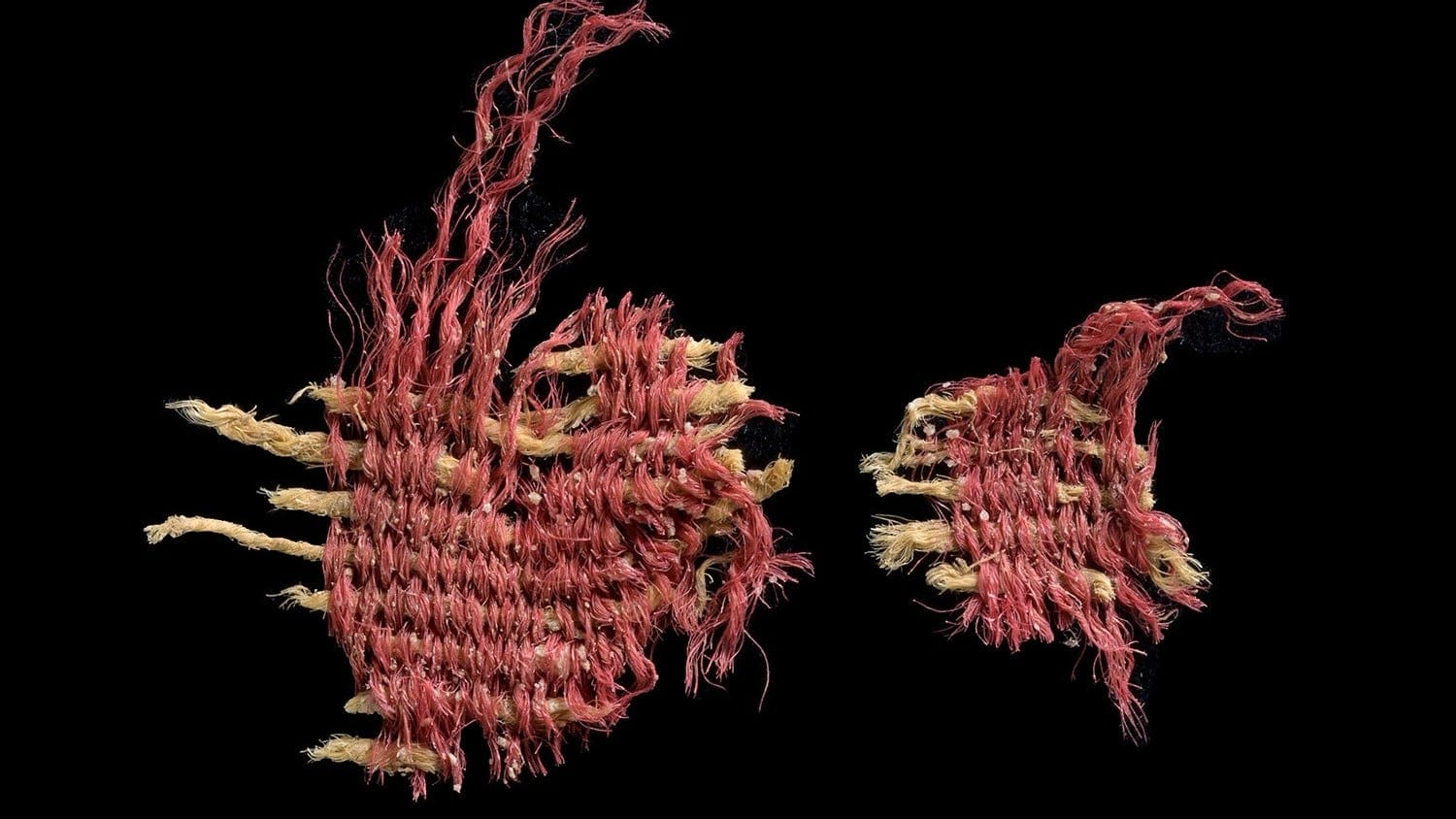
[ad_1]
Craft
History
#archaeology
#insects
#textiles
#weaving
July 30, 2024
Grace Ebert

A fragment of the rare 3,800-year-old textile, dyed with the Kermes vermilio. Photo by Dafna Gazit, Israel Antiquities Authority. All images courtesy of Israel Antiquities Authority
With waxy coverings and no limbs, female scale insects known as kermes vermilio are small parasites that attach themselves to oak plants to feed on sap. Native to the Mediterranean, the critters also produce a red dye that has been used since antiquity, the oldest example of which was recently found in a tiny woven textile.
Researchers from the Israel Antiquities Authority, Bar-Ilan University, and the Hebrew University found the .7-inch fragment in 2016 in the Cave of Skulls, which lies west of the Dead Sea in the Judaean Desert. The findings were just published this month in the Journal of Archaeological Science and date the linen-and-wool scrap to the Middle Bronze Age (1954 to 1767 BCE), a period from which it’s rare to find textiles given their rapid decomposition. In this case, the dry, consistent climate of the caves aided in preservation.
Ancient dyes are often linked to social and economic status, and this textile is no different. “The red color from the scale insects, which are based on molecules such as kermesic acid or carminic acid are both stable and beautiful, making them much more prestigious than vegetal dye sources,” researchers say. Thanks to High-Performance Liquid Chromatography—a technique used to identify various materials within a single compound—the team could pinpoint that the piece was tinted with kermes vermilio rather than another substance.
Because of their diminutive size of less than eight millimeters and ability to camouflage, the insects are incredibly difficult to spot. According to artnet, the red dye is even trickier to procure given it’s only produced for about a month after the females have laid eggs but before they’ve hatched. This scarcity lent itself to prestige in ancient times, and the dye appears in several instances in the Hebrew Bible and even in Egyptian mummy portraits.
Archaeologists also uncovered additional textiles, pottery shards, baskets, ropes, and other objects within the caves, which they believe were home to various groups of refugees across centuries. The discoveries indicate new details about dyeing traditions and the people who occupied the area.
The important find bridges the gap between written sources and the archaeological discoveries, providing evidence that the ancient textile dyeing industry was—already at this stage—sufficiently established for dyeing using animals. The rare textile is a testament to broad international commercial networks functioning already at this time and indicates the presence of an elite society.
Read more about the process behind the dig in the Journal of Archaeological Science.

Naama Sukenik testing the textile

The textile fragment in the lab
#archaeology
#insects
#textiles
#weaving
Do stories and artists like this matter to you? Become a Colossal Member today and support independent arts publishing for as little as $5 per month. You’ll connect with a community of like-minded readers who are passionate about contemporary art, read articles and newsletters ad-free, sustain our interview series, get discounts and early access to our limited-edition print releases, and much more. Join now!
[ad_2]